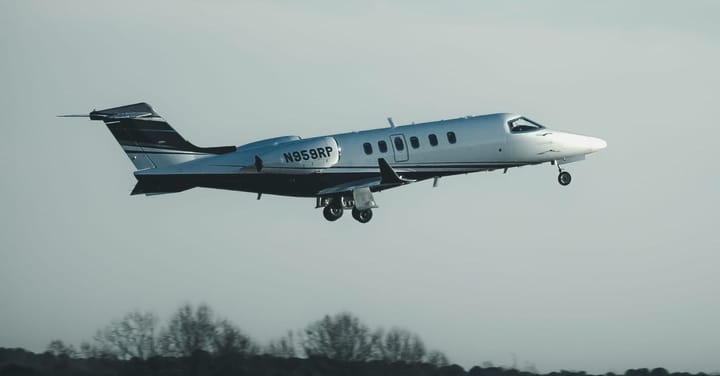Estimate your aircraft’s annual depreciation and see how MACRS, Straight-Line, and Custom methods affect book value, tax savings, and ownership costs. Use side-by-side comparisons to choose the best depreciation approach for optimized financial planning and tax benefits.
Welcome to the Aircraft Depreciation Calculator — a tool designed specifically for aircraft operators, lessors, fleet managers, and aviation financial planners to model the decline in value of an aircraft over time.
✈️ What Does This Tool Do?
This tool helps you estimate how your aircraft's value will decrease each year due to depreciation, and how that impacts:
- Book value
- Tax savings
- Maintenance & ownership costs
- Operational cost impact
It provides:
- Detailed yearly tables
- Interactive charts
- Exportable data
All based on your actual or planned aircraft purchase data.
🎯 Why Is Depreciation Important in Aviation?
Aircraft depreciation is a key factor in:
- Financial planning
- Tax deductions
- Asset resale value
- Fleet replacement timelines
- Profitability analysis
Using realistic depreciation modeling can help you:
- Lower taxable income
- Estimate long-term ownership costs
- Set better lease or resale pricing
- Understand capital recovery timelines
👤 Who Is This Tool For?
This tool is built for:
- Commercial and charter flight operators
- CFOs and aviation accountants
- Private aircraft owners
- Aircraft leasing companies
- Fleet analysts managing multi-aircraft portfolios
📚 How to Use It — Step-by-Step
This section explains each input field and decision point in the calculator so flight operators, fleet managers, and finance professionals can use it effectively and accurately.
🔹 Step 1: Aircraft & Depreciation Info
This section captures the fundamental data needed to calculate your aircraft’s depreciation over time.
| Field | Explanation |
|---|---|
| Asset Cost ($) | Enter the total purchase price of the aircraft, including any associated acquisition costs. This is the base value that will be depreciated over time. Example: Enter 12,000,000 for a $12 million aircraft. |
| Residual Value ($) | The estimated remaining value of the aircraft at the end of its useful life — often based on resale, salvage, or part-out expectations. Example: A residual value of 2,000,000 means you expect to sell or dispose of the aircraft for that amount after depreciation. |
| Useful Life (Years) | The number of years you expect the aircraft to be in economic service — that is, generating revenue or value before retirement. This affects how long depreciation will occur. Typical range: 5–20 years. For a mid-size jet, 10 years is common. |
| Start Year | The calendar year you want the depreciation schedule to begin. Usually this is the year the aircraft was acquired, placed into service, or added to your books. Example: If you're entering data for an aircraft acquired in 2025, enter 2025. |
| Tax Rate (%) | Your organization’s corporate tax rate. This rate is applied to annual depreciation expenses to estimate tax savings (i.e., how depreciation reduces your taxable income). Example: Enter 30 if your corporate tax rate is 30%. |
🧠 Why this matters: These inputs define the value decline, tax impact, and ownership timeline for the aircraft — forming the basis of your financial model.
🔹 Step 2: Select Depreciation Method
Now choose how the aircraft should be depreciated over time. You may select one or multiple methods to compare side-by-side.
1. Straight-Line (SL)
- Depreciates the aircraft equally over each year of its useful life.
- Most commonly used for GAAP/IFRS financial reporting.
- Easy to predict and stable over time.
Example:
For a $10 million aircraft with a $2 million residual over 10 years, depreciation = ($10M - $2M) / 10 = $800,000 per year.
2. MACRS (5-Year)
Stands for Modified Accelerated Cost Recovery System.
- Used in the United States for tax purposes.
- Applies a front-loaded depreciation schedule — meaning you write off more in the first few years.
Why Use It:
Larger tax savings in early years = improved cash flow.
Especially useful for Part 135 operators and owners using aircraft for business.
MACRS 5-Year Example Rates:
Year 1 = 20%, Year 2 = 32%, Year 3 = 19.2%, etc.
3. Custom
- Allows you to manually define a custom depreciation rate for each year.
- Useful for:
- Country-specific tax rules
- Internal accounting policies
- Leases with unique schedules
Example:
Year 1 = 50% depreciation, Year 2 = 30%, Year 3 = 10%, and so on.
Total must not exceed 100% in total.
📌 Important: If you select more than one method, the tool will generate side-by-side comparison charts and tables, allowing you to visually compare:Yearly depreciationRemaining book valueTax savingsTotal cost impact
This helps you determine which method is most tax-efficient or financially sustainable for your operation.
📊 Example Scenario
You purchase a $12 million aircraft with a $2 million residual, a 10-year useful life, and a 30% tax rate. You're choosing between SL and MACRS.
By running this tool, you’ll see:
- Under SL, you get $1M depreciation/year
- Under MACRS, you get more depreciation in Years 1–3
- Tax savings in early years are higher under MACRS
- Maintenance costs increase by 3%/year
- Your total annual cost with tax impact is easier to plan
💡 Tips for Best Use
- Use MACRS for tax-oriented US-based planning.
- Use SL for financial reporting (GAAP/IFRS).
- Use Custom when following country-specific or internal policy depreciation schedules.
- Input flight hour + maintenance data to see realistic cost trends.
- Export results and use them in your annual budget decks.




Comments ()